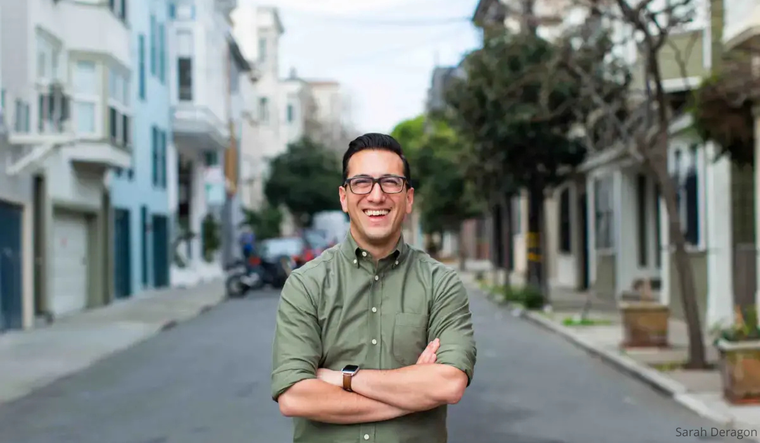The New Thinking Behind What's Causing Alzheimer's, Cancer, and More: Dr. Shilpa Ravella Explains What It Is—and What You Can Do About It
The human body is genius, doing remarkable things to try to keep us healthy at every turn. Inflammation is a perfect example of this—an ancient force that evolved to defend against injury and foreign pathogens. Think about the last time you stubbed your toe: That redness, heat, swelling and pain you saw and felt was all thanks to inflammation happening inside the body.
Yet while that kind of acute inflammation is helpful, there’s another form of inflammation happening in far too many of us—and most of us don’t realize it’s there, says Shilpa Ravella, MD, a gastroenterologist and author of the new book, A Silent Fire: The Story of Inflammation, Diet & Disease.
“More and more research shows that low level inflammation accrues even in healthy people who may not have any obvious signs it’s there,” says Dr. Ravella. “This type of inflammation is tied to the majority of our chronic diseases, simmering under the surface of everything from heart disease, cancer, and diabetes to certain neurodegenerative and psychiatric disorders as well as autoimmune conditions.”
The Sunday Paper sat down with Dr. Ravella to talk about why the majority of us are walking around inflamed without even knowing it, as well as the best ways to combat this hidden inflammation that’s a potential common root cause of modern disease.
A Conversation with Dr.Shilpa Ravella
What are some of the ways to tell if we’ve got hidden inflammation?
Having belly fat is one sign. This type of subcutaneous fat is very different than the fat that pads your thighs, buttocks, and upper arms. That fat can be protective; belly fat is a marker for visceral fat, which wraps around your abdominal organs and is highly inflammatory. Visceral fat spews out inflammatory markers at all hours of the day. So, if you have belly fat, you are likely inflamed. And even if you don’t have belly fat, you can still have visceral fat if you have poor dietary habits.
Some other signs: If you go to the doctor and he or she diagnoses you with insulin resistance or diabetes, then most likely you have some silent inflammation in the body. If your cardiologist tests you for high sensitivity C-reactive protein (hs-CRP) and it’s high, that’ll also tell you you’ve got excess inflammation in the body.
You write that an inflamed body in middle age is linked to mental decline in later years. Why is this? And what do we know about how inflammation may play a role in the onset of Alzheimer’s?
Research is increasingly suggesting that inflammation likely plays a role in the onset and progression of Alzheimer’s disease. Observational studies that show an inflamed body in middle age is linked to cognitive decline in older age; scientists are also uncovering more genes related to the development of Alzheimer’s, and many are involved in immune function.
Autopsy studies have shown that some brains can be filled with these amyloid and tau proteins but not develop Alzheimer’s. What we’re learning is that the brains of Alzheimer’s patients contain more inflammatory cells, which tells us that maybe those amyloid and tau proteins in the brain need inflammation in order for the disease to progress.
Inflammation can be a silent killer. It is not only a consequence but also a cause of certain chronic diseases. It took scientists a long time to be able to state that, even though we’ve been talking about inflammation for decades and even centuries. The good news is that we have tools today that can help to prevent and treat excess inflammation.
So, what are some of the best ways to decrease inflammation?
Two of the most important things you can do are to make some changes to your diet and be sure to incorporate regular exercise into your routine.
One dietary change that can make a huge difference is to increase the amount of fiber you eat. For women, the recommended dietary allowance (RDA) of fiber each day is 25 grams—but only 5% of all Americans meet the RDA for fiber. Our ancestors were eating 100 grams of fiber each day. Ideally, we’d all consume even more than the recommended 25 grams per day. We are a nation with a fiber deficiency, and it’s our most critical anti-inflammatory agent.
Fiber manipulates the immune system directly or through the germs in our gut. When our gut bacteria digest soluble fiber, they make short chain fatty acids that calm inflammation in the gut and throughout the body. Eating a lot of fiber is one of the most crucial things all of us can do.
It’s also important to incorporate some type of movement into your days. Exercise is anti-inflammatory; there have been dozens of human trials across age groups that show regular exercise can calm inflammation and even shrink inflammatory fat around the abdominal organs. Exercise is also tied to an improvement in the diversity of the microbes in your gut, something that promotes good health.
When you’re at the grocery store shopping for food, what do you reach for—and steer clear of—to keep inflammation in check?
I try to gravitate toward the dark greens, as well as deep red and purple foods, such as berries. These foods are high in vitamins, minerals and phytochemicals called polyphenols, which are incredibly important when it comes to managing inflammation.
That advice to shop the perimeter of the grocery store really does help you get a wide diversity of plant foods. I’m also mindful of the quantity of packaged foods I eat.
I love legumes and whole grains; they’re full of fiber and very anti-inflammatory. Crucifers like cauliflower, cabbage, kale, and broccoli are important for cancer prevention and have many beneficial effects in the body, including for the immune system. And don’t forget about spices and herbs, which have some of the highest levels of polyphenols.
What do you hope readers will know about inflammation after they read your book?
I hope readers come away with an understanding of how pervasive inflammation is—and how it’s tied to not only human health but also planetary health. We have the tools today to help protect our health, that of our loved ones, and our planet. The choices we make at the grocery store and our dinner tables are connected to global health—and those choices can help to preserve what we cherish in this world today.
Shilpa Ravella is a gastroenterologist and author. She is an expert in the field of nutrition and is particularly interested in the interactions between food, the microbiome and the immune system. A Silent Fire: The Story of Inflammation, Diet & Disease (October 11, 2022, W.W. Norton) is her first book. Her Ted-Ed lesson, ‘How the Food You Eat Affects Your Gut,’ has garnered over five million views. To learn more, visit shilparavella.com.
Question from the editor: What are some of the steps you plan on taking to reduce inflammation in your body? We’d love to hear from you in the comments section below!
Please note that we may receive affiliate commissions from the sales of linked products.



